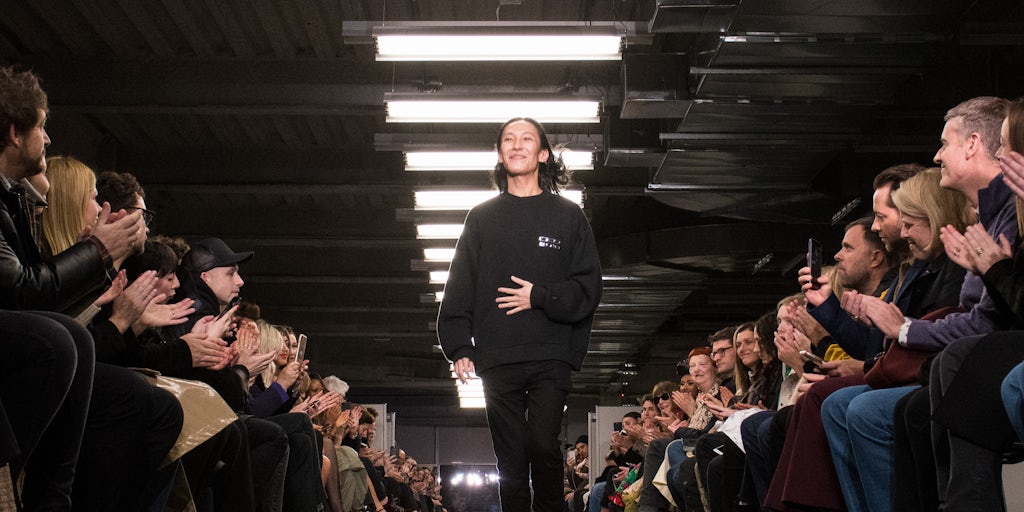How LVMH’s Fashion Division Returned to Double-Digit Growth in the Pandemic | News & Analysis, BoF Professional
Model Janaye Furman walks the runway during the Louis Vuitton Womenswear Spring/Summer 2021 show. Source: Getty Images
PARIS, France — In an unexpected turn, LVMH reported Thursday that its fashion business grew by double-digits over the summer, even as the pandemic raged on in the US, Britain and other key markets.
That the owner of Louis Vuitton and Dior was able to sell 12 percent more handbags and ready-to-wear in the third quarter than it did over the same period last year is a sign that the pandemic’s impact may not drag on as expected — at least not for luxury’s biggest brands.
The comeback surprised investors after LVMH’s fashion sales fell as much as 24 percent during coronavirus lockdowns in the first half of the year. Analysts predicted flat sales for the division this quarter.
How did the luxury conglomerate manage to do it? In a word: China. The company’s biggest brands were seeing rapid sales growth in the country pre-pandemic, and those customers have returned in force as life returned to normal there. Fashion sales to Chinese consumers returned to growth worldwide during the period, Chief Financial Officer Jean-Jacques Guiony told analysts. US customers also contributed to the recovery.
The world’s biggest luxury group isn’t out of the woods just yet: the Paris-based conglomerate saw overall sales decrease 7 percent as it posted losses at all of its other divisions, which include airport duty-free shops, hospitality, Sephora and other businesses hard-hit by Covid-19.
But it’s a positive sign as the industry heads into earnings season, with rival conglomerate Kering reporting results next week, along with Moncler, Hermes and other major names.
Chinese Customers Are Leading the Charge
Coronavirus lockdowns in luxury’s key Asian markets came sooner and were generally much shorter than in Europe and the US. Luxury shoppers in Mainland China were among the quickest to adapt to a “new normal” and ramped up domestic shopping as well as ordering online.
Investors have remained sceptical that surging domestic demand could make up for the huge share of luxury purchases usually made by Chinese tourists during tax-free shopping trips abroad, but at least for LVMH, the industry’s most important client base came through.
“In much of Asia, Covid-19 is yesterday’s news,” said HSBC luxury analyst Erwan Rambourg. “The supply of potential new clients for brands to recruit from remains basically unchanged.”
The fact that growth in China is being fuelled primarily by entry-level and first-time luxury buyers tends to benefit the biggest luxury brands like Louis Vuitton, whose products are among the world’s most recognizable status symbols.
The US Consumer’s “K-Shaped” Recovery
LVMH also called out strength among US clients as helping drive the rebound.
Election uncertainty, social justice protests, and fresh waves of coronavirus have dampened consumer confidence overall. But behind the topline numbers, economists see a “K-shaped” recovery: while millions of Americans who lost their jobs are spending less on discretionary goods, those whose incomes were unchanged are feeling flush after months avoiding travel and eating out. LVMH’s results indicate they are already starting to spend some of those savings.
Dior’s Fashion Moment
While newly recruited luxury shoppers have reliably flocked to Louis Vuitton for decades, LVMH’s second-biggest fashion brand Dior is also experiencing a surge in demand. The brand increased its market share in all regions, LVMH said.
Womenswear creative director Maria Grazia Chiuri‘s hit book totes, re-worked saddle bags and logo t-shirts are the kind of recognizable “hero” items that consumers focus on when shopping online or planning an efficient trip to the store, and don’t depend on foot traffic as much as less recognizable products. The same might be said for menswear designer Kim Jones‘ cross-body bags for men and monogrammed high-top sneakers.
Online Luxury Boomed
LVMH saw a “big, big increase” in consumers’ willingness to buy luxury products online, Guiony said. That was more true for its fashion brands than for watches and jewellery, where sales at brands including Hublot and Bulgari fell 14 percent during the quarter.
Guiony said that the profitability for e-commerce and physical sales were now roughly equivalent, but that the group still preferred selling to clients in stores.
As stores reopened after Covid-19 lockdowns, most clients apparently felt the same way.
“It’s an inverse relationship,” Guiony said. “When the growth in brick and mortar resumes, we see the growth in online slowing down”
Still Pain Ahead
The surprising rebound at Vuitton and Dior doesn’t mean LVMH is out of the woods just yet. Its other fashion brands like Fendi, Loewe and Celine saw a “good improvement” over the summer, but the company’s statements did not signal a return to growth.
Dependent on store traffic, free samples, and airport impulse purchases, LVMH’s perfume and beauty products continued to post steep declines, with sales falling 16 percent. The retail division that operates cosmetics giant Sephora and airport shopping chain DFS was hardest hit, with sales falling 29 percent.
Related Articles:




:quality(70):focal(1090x428:1100x438)/cloudfront-eu-central-1.images.arcpublishing.com/businessoffashion/WSO6R7TGKFH25IMGLVKVBYOO4A.jpg)
